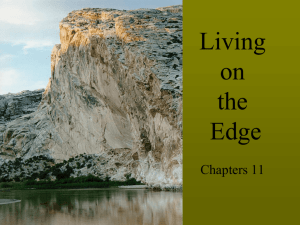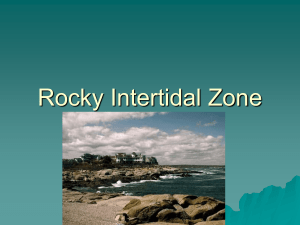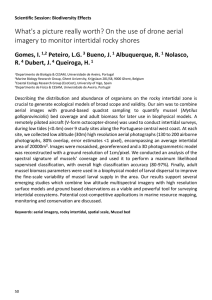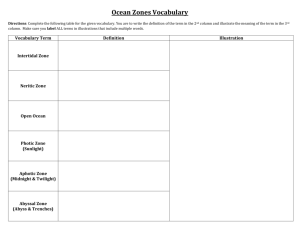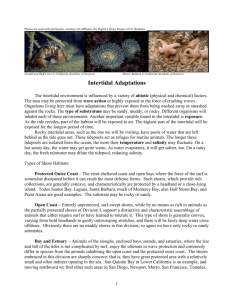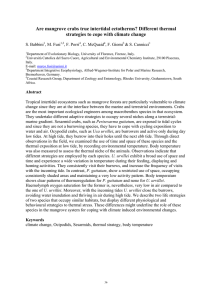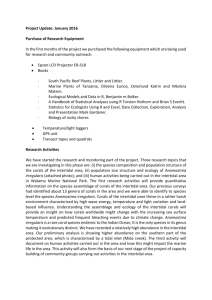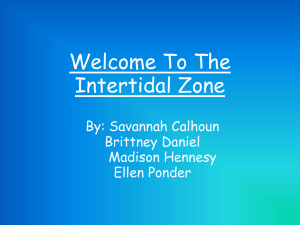Intro to Intertidal Zone
advertisement
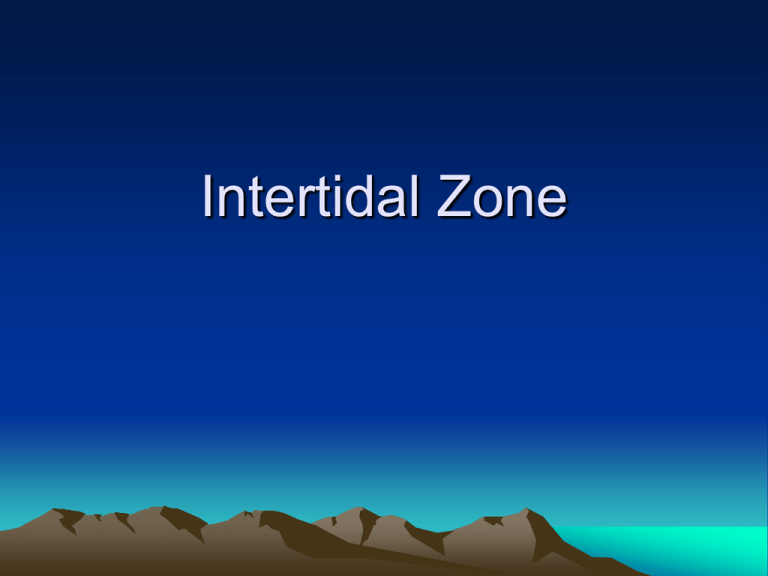
Intertidal Zone What is the intertidal zone? • Area between highest high tide (spring) and lowest low tide (neap) 2 Types of Intertidal Zones • Based on substrate: • Rocky Intertidal – Western Coast of US, Eastern Canada and New England • Sandy Intertidal – Eastern and Gulf Coasts of US Abiotic Factors • Exposure to air – Threat of high temp. – Higher organisms live in intertidal, more time exposed • Desiccation – drying out – Clam up – Run and hide • Wave shock – Bigger problem along rocky shores – Hits headland the hardest Wave Refraction Other Challenges • Feeding Restrictions – Filter feeders cannot eat when tide is out • Predators – More difficult to hide when tide is out • Salinity fluctuations – Decreases with rain – Increases with evaporation
